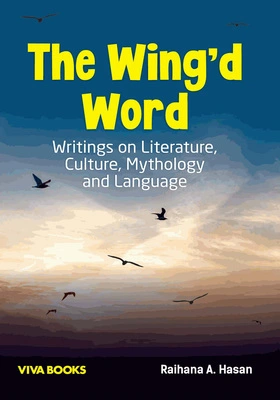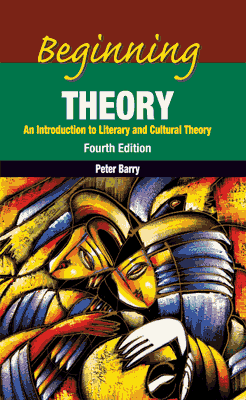From Text to Theory
From Text to Theory
A Handbook of Literary and Cultural Theory
₹715.50 ₹795.00 Save: ₹79.50 (10%)
Go to cartISBN: 9788130918044
Bind: Paperback
Year: 2017
Pages: 288
Size: 140 x 216 mm
Publisher: Viva Books Originals
Sales Territory: Worldwide
Description:
Approaching theory through textual analysis, this handbook is a comprehensive guide to the prominent schools of thought in literary and cultural theory. It reverses the conventional instructional model of concept-to-example and starts with a literary or cultural text, analysing its way to the theoretical core. The works analysed range from the canonical to the contemporary and popular, covering both print and digital media. Each chapter is thus fashioned to familiarize the students with key ideas and terms of various schools of criticism such as:
- STRUCTURALISM
- DECONSTRUCTION
- MARXISM
- NEW HISTORICISM
- FEMINISM AND GENDER STUDIES
- PSYCHOANALYTIC CRITICISM
- POSTCOLONIALISM
- ECOCRITICISM
Following detailed discussions of the established ideas in theory, the concluding chapter surveys and expands upon contemporary developments in cultural theory for perspectives on new and upcoming ideas in the field such as:
- POSTHUMANISM
- FAT STUDIES
- ANIMAL STUDIES
Target Audience:
Students and Academicians of English Literature and Cultural Theory.
Contents:
Preface
Acknowledgements
Chapter 1: Structuralism
Example 1: Edgar Allan Poe's • Annabel Lee • Key Theme: Love and Mortality • Signs, Referents and Meaning
Example 2: • Facing the Music • , cartoon in Punch • Key Theme: Refiguring Signs and Culture • Semiotics and Varieties of Signs
Example 3: Saki's • The Open Window • Key Theme: Storytelling and Sociality • Narrative and Structure
Example 4: Edgar Allan Poe's • The Fall of the House of Usher • Key Theme: Narrating Death and Burial • Narrative Levels and Narrators
Chapter 2: Deconstruction
Example 1: Robert Browning's • My Last Duchess • Key Theme: Art and Identity • Deconstruction, Binaries and the Aporia of Language
Example 2: William Wordsworth's • The Solitary Reaper • Key Theme: Nature, Culture, Memory and Repetition • Deconstruction and the Laws of Literature • Deconstruction and the Plural Text • Deconstruction and the Subject
Chapter 3: Marxism
Example 1: (i) From Charles Dickens, Oliver Twist • (ii) Charlotte Perkins Gilman's • Christian Virtues • Key Theme: Class, Identity and Cultural Values
Example 2: Nineteenth-century advertisement of Pears soap • Key Theme: Race/Class, Culture and Ideology • Class, Hegemony, Ideology
Example 3: Dabangg • Key Theme: Shifting/Multiple Models of Masculinity • Dominant, Residual and Emergent Culture
Example 4: Raja Rao's Kanthapura • Key Theme: Cultural Identity, Nationalism and Politics • Genre, Literary Discourse and Politics
Example 5: Literary Festivals, Celebrification and Indian Writing in English (IWE) • Key Theme: Cultural Production • Institutions, Cultural Production and the Cultural Industries
Chapter 4: New Historicism
Example 1: (i) From Joseph Conrad, Heart of Darkness • (ii) From Robert Louis Stevenson, Treasure Island • (iii) From Henry Morton Stanley, In Darkest Africa • (iv) From King Leopold II of Belgium's letter to Colonial Missionaries • Key Theme: Maps, Masculinity, Colonial Exploration • Texts, Materiality, Culture
Example 2: (i) William Wordsworth's • The Old Cumberland Beggar • (ii) William Blake's • London • (iii) Thomas Gainsborough, Mr and Mrs Andrews • (iv a) From Uvedale Price, An Essay on the Picturesque • (iv b) From William Gilpin, Observations on the River Wye . . . • (v) William Hogarth, Gin Lane • Key Theme: Aestheticizing Poverty • Cultural Formations, Institutions and Social Energies
Example 3: Zombie Dystopian Films • Key Theme: Monsters and Posthuman Conditions • Science, Discourses and Popular Culture
Chapter 5: Feminism and Gender Studies
Example 1: (i) From Jane Austen, Pride and Prejudice • (ii) From Charlotte Bront • • , Jane Eyre • Key Theme: Gender as the Sum of Socially Demanded/Sanctioned Qualities • The Social Construction of Gender
Example 2: (i) From Jeanette Winterson, The PowerBook • (ii) From H • • l • • ne Cixous, • The Laugh of the Medusa • (iii) Emily Dickinson's • Wild, Wild Nights • Key Theme: Writing (as) the Woman • Woman, Language, Writing
Example 3: (i) From R.K. Narayan, The Dark Room • (ii) From Jane Austen, Pride and Prejudice • Key Theme: Women, Labour, Value • Gender, Material Conditions and Value
Example 4: From Toni Morrison, The Bluest Eye • Key Theme: Race, Double Consciousness, Aesthetics • Gender and Race
Example 5: (i) From William Shakespeare, Macbeth • (ii) Alfred, Lord Tennyson's • The Defence of Lucknow • Key Theme: Masculinity in Crisis • Gender, Postfeminism and Posthumanism
Chapter 6: Psychoanalytic Criticism
Example 1: (i) Nineteenth-century American advertisement for cigars • (ii) Nineteenth-century American advertisement for Coca-Cola • Key Theme: Sexuality in the Field of Vision • Scopophilia, Desire and Commodification
Example 2: (i) From Anne Sexton, • And One For My Dame • (ii) From Sylvia Plath, • Daddy • Key Theme: Father Complexes • Oedipal and Electra Complexes
Example 3: Kate Chopin's • The Story of an Hour • Key Theme: Gender and Repressed Lives • The Unconscious, Repression and the Return of the Repressed
Example 4: From Mary Shelley, Frankenstein • Key Theme: Recognition and Identity • The Three Orders and the Making of Identity
Chapter 7: Postcolonialism
Example 1: Cartoon from Punch • Key Theme: Colonial Stereotyping • Colonial Discourse, Stereotypes and Ambivalence
Example 2: (i) From William Shakespeare, The Tempest • (ii) From Rudyard Kipling, Kim • (iii) From Derek Walcott, • A Far Cry from Africa • (iv) From Kamala Das, • An Introduction • Key Theme: Language, Mimicry and Agency • Language and Imperialism
Example 3: (i) From John Dryden, Aureng-zebe • (ii) From Sydney Owenson, The Missionary • Key Theme: Gender and Colonial Representations of Vulnerability • Identity and Subalternity in Colonialism
Example 4: From Derek Walcott, • The Sea is History • Key Theme: Colonial and Postcolonial Histories • Postcolonialism and the Reclamation of History
Example 5: (i) From Nuruddin Farah, Maps • (ii) From Ayi Kwei Armah, The Beautyful Ones Are Not Yet Born • (iii) From Kath Walker, • We Are Going • Key Theme: Nations and Identity • Nations, National Identity and the Politics of Belonging
Example 6: (i) From Meena Alexander, Manhattan Music • (ii) From Kavery Nambisan, The Hills of Angheri • (iii) From Kiran Desai, The Inheritance of Loss • Key Theme: Forms of the Postnational • Neocolonialism, the Postnational and the Transnational
Chapter 8: Ecocriticism
Example 1: William Wordsworth's • Nutting • Key Theme: Nature and Humanity
Example 2: Andrew Marvell's • The Garden • Key Theme: Nature versus Culture
Example 3: Frank Miller's Batman: The Dark Knight Returns • Key Theme: The Ecological Gothic • Ecocriticism and the Re-evaluation of Human-Nature Relations • Environmental Humanities in the Anthropocene
Chapter 9: New Directions In Literary And Cultural Theory
A. Posthumanism
Example 1: From Octavia Butler, Fledgling
Example 2: From Kazuo Ishiguro, Never Let Me Go • Posthumanism, Human Evolution and Species Cosmopolitanism
B. Fat Studies
Example 1: Cindy Baker's Fashion Plate and Kristin Kurzawa's Femmes: Front and Center • Adipose, Abjection and Cultural Critique
C. Animal Studies
Example 1: Sci-fi Films
Example 2: From H.G. Wells, The Island of Doctor Moreau • Critical Animal Studies, Anthropocentrism, Speciesism
Bibliography
About the Author:
Pramod K. Nayar teaches at the Department of English, University of Hyderabad, and is the author, most recently, of The Indian Graphic Novel (2016), The Postcolonial Studies Dictionary (2015), The Transnational in English Literature (2015), Citizenship and Identity in the Age of Surveillance (2015) and Posthumanism (2013). His forthcoming books include Human Rights and Literature and The Extreme in Contemporary Culture.
Professor Pramod K Nayar, lists as areas of specialization, English colonial writings on India, posthumanism, graphic novels, celebrity culture and literary-cultural theory. He has authored books on these and papers in highly ranked journals worldwide, from Modern Fiction Studies and Changing English to Orbis Litterarum and Narrative. He won the Visitor’s Award for Best Research in the Arts, Humanities and Social Sciences from the Honourable President of India in 2018, and is globally ranked at 120 in Literary Studies according to a Stanford study (2021).







